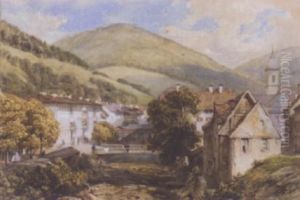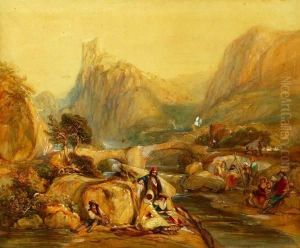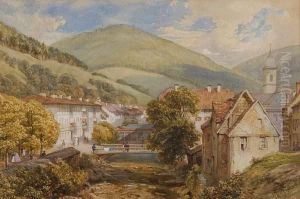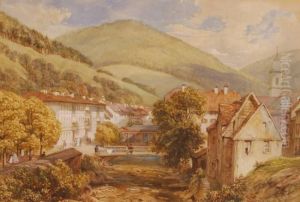James T. Herve D' Egville Paintings
James Harvey D'Egville, often misspelled as Herve D'Egville, was a British dancer and choreographer of the late 18th and early 19th centuries. Born in London in 1778, he came from a family with strong connections to the dance world; his father, Gaetano Apolline Baldassare Vestris, was a dancer, and his mother, Anna Heinel, was also a celebrated ballerina.
D'Egville trained under his father and quickly established himself as a talented dancer. He performed at various venues, including the King's Theatre and the Pantheon in London. His style was characterized by its elegance and grace, typical of the classical ballet of the period. He was known for his choreographic works as well as his performances. D'Egville's work as a choreographer was influential in the development of ballet in Britain, and he was one of the figures responsible for introducing and popularizing the art form to British audiences.
Aside from his contributions to dance, D'Egville also had an interest in theatre and stage design, which influenced his approach to ballet productions. His choreographies often included elaborate sets and costumes, which added to the visual spectacle of his ballets.
D'Egville continued to work in the dance world until his retirement, after which little is known about his activities. He passed away in 1839, leaving behind a legacy as one of the prominent figures in the British dance scene during his time. Although not as widely remembered today as some of his contemporaries, D'Egville's influence on the style and presentation of ballet in Britain was significant during the formative years of the art form.



